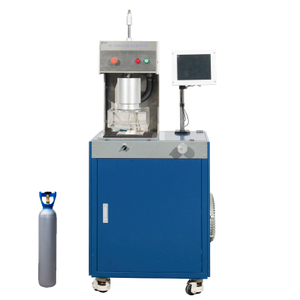In the air, in addition to suspended particulates, there is a category of harmful substances - chemical gases, which are often invisible and untouchable, but more harmful to people, even fatal. They exist in the form of gaseous molecules, which cannot be removed by ordinary filters, but require molecular adsorption, such as activated carbon and molecular sieve porous media.
Organic compounds (VOC, including toluene, acetone etc.), acidic gases (e.g. SO2, H2S etc.), alkaline gases (e.g. NH3), other gases (e.g. CO). Gases of different nature have different toxicity and different permissible limits. In general, porous media such as activated carbon are often made into cartridges, adsorption devices etc. to treat incoming air for human breathing, e.g. gas masks, activated carbon filters etc.
What is the adsorption and removal rate for these gases and what way are they tested and evaluated? Some standards make relevant provisions.
1. Standards Summary
There are mainly three types of filters, for air filters of road vehicle, general ventilation and respiratory protective devices, which will cover the use and requirements of the chemical gas filtration.

2. Test Index
Air filter of road vehicle is a filter specifically designed for air purification in the car cabin. HVAC gas-phase air purification media and filters for general ventilation are aimed at media and filters used in commercial buildings and general factories that do not produce toxic and hazardous substances.
In practice, filters of various shapes are generally made of activated carbon composite filter cloth, commonly known as carbon laminated cloth, which is a highly efficient adsorption material - activated carbon - laminated with filamentary non-woven fabric.
With regard to the adsorption performance of gaseous pollutants, the index to be tested are differential pressure (resistance to air flow rate), efficiency (removal efficiency), capacity and desorption (retentivity). The capacity refers to mass of contaminant removed from the challenge gas stream by the filter during the total test time.
Will the gas that has been adsorbed be released again? This is known as desorption, which is defined as " release of previously trapped contaminants from a test filter" and retentivity, which is defined as " measure of the ability of an adsorbent or GPACD to resist desorption of an adsorbate". Therefore, a good gas filter material is not only more efficient in removing gases, but also has to have good retentivity.
With regard to testing the desorption performance of gases, air filters of road vehicle specifies that the test is evaluated by monitoring the change in gas concentration downstream after the chemical gas contaminant has stopped being injected. The general ventilation filtration standard is called retention force and the specified method is to evaluate the desorption characteristics using a zero concentration gas load.
However, gas masks for respiratory chemical gas filtration are available for different gases, either individually for a single gas or in combination for a variety of gases. One of the indicators related to the performance of gas filtration is the protection time, the time from the beginning of the passage of the test gases into the filter part to the time when the permeation concentration of the test gases reaches a limited value under the specified conditions.
The evaluation of the filter media is very important for the actual effectiveness of the subsequent finished filter. Only with a good choice of filter media under the right conditions, supplemented by a good production process, can a quality product be obtained.
3、Gas type and concentration
1)Air filters of road vehicle
The gas filtration tests for air filters of road vehicles are basically the same for the types of gases and concentration settings specified in international, German and Chinese standards, as shown in the table below.

The mandatory pollutants are n-butanea and toluene and the optional pollutant is SO2, the difference being that the optional gas in the German standard is NOX at 30 ppm.
2) Gas-phase air cleaning for general ventilation
The types and concentrations of test gases used in general ventilation gas-phase air cleaning media and filters vary from country to country. The table below lists several gases and concentrations recommended by each standard, some standards do not list all the gases involved. It is recommended that you consult the corresponding standard for the product you want to follow.

As can be seen from the provisions of the various standards, the gas concentrations used in efficiency tests are usually less than those used in capacity tests. In practice, gas concentrations are much lower than those specified in the standards, and the use of low concentrations for filtration efficiency tests improves the accuracy of the test results. For example, when testing with toluene, at high concentrations there is a tendency to desorption that does not exist in practice due to the small volume of the pores and the isotherm ordering of the different adsorbents can be changed. Furthermore, the material that is proposed in the standard to perform best in the high concentration test may not also be the best in low concentrations or in actual use. Whereas the capacity uses high concentrations, we can draw an analogy to the capacity of a filter, where high concentrations can shorten the test time, otherwise it may take days or even months to complete the test at low concentrations.
The above two categories of standards, both filter media testing and filter testing, both efficiency testing and capacity testing, most of the prescribed gas concentrations are between 50ppb~100ppm, only Japan JIS B9901 in CO, toluene and several other substances in capacity test concentration of 1000ppm.
3) Respiratory protective devices
GB 2890 respiratory protection – Non-powered air-purifying respirators, mask filter parts protection time test provisions of the gas types and concentrations are shown in the following table.

Concentration conversions were carried out using benzene, SO2 and NH3 as representatives and the conversions resulted in gas concentrations between 1000 ppm and 10,000 ppm. These concentrations are much higher than the concentrations of air filters of road vehicle and filter elements for HVAC.
4、Summary
(1) The fields of chemical gas filtration applications including air filters of road vehicle, HVAC filters and respiratory protective devices. The test indexes for air filters of road vehicle and filters for HVAC are resistance (differential pressure), capacity, removal efficiency and retentivity (desorption), and the test index for respiratory protective devices is protection time.
(2) Various gases are used in the testing of filter media for gas filtration, finished cartridges and respiratory protective devices. The common ones are acidic gases represented by SO2, basic gases represented by NH3 and VOC gases represented by toluene. In addition, there are n-butane, H2S, NOX, CO, etc.
3) Regulations on gas concentrations.
The recommended gas concentrations for air filters of road vehicle (ISO 11155-2, etc.), HVAC filter materials and filters (ISO 10121-1, 10121-2, etc.) are mostly in the range of 50 ppb to 100 ppm. Only the Japanese JIS B9901 standard requires 1000 ppm for CO and toluene during the capacity test. 100 ppm is basically sufficient to meet the demand and there is no need to increase the risk of the test in order to pursue high concentrations.
Gas masks are different from the above-mentioned filter materials and cartridges used in general environments, and are protective equipment used in special environments, where the recommended gas concentration is between 1000 ppm and 10000 ppm. This high concentration is more in line with the actual environment in which such products are used and allows for better evaluation of the product.














